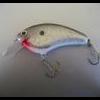
BobP replied to Bass_Fanatic's topic in Fishing Rods, Reels, Line, and Knots

BobP replied to dulouz's topic in Fishing Rods, Reels, Line, and Knots

BobP replied to bobabooey's topic in Fishing Rods, Reels, Line, and Knots

BobP replied to bobabooey's topic in Fishing Rods, Reels, Line, and Knots

BobP replied to jignfule's topic in Fishing Rods, Reels, Line, and Knots

BobP replied to hurricane_e's topic in Fishing Tackle
We have placed cookies on your device to help make this website better. You can adjust your cookie settings, otherwise we'll assume you're okay to continue.

